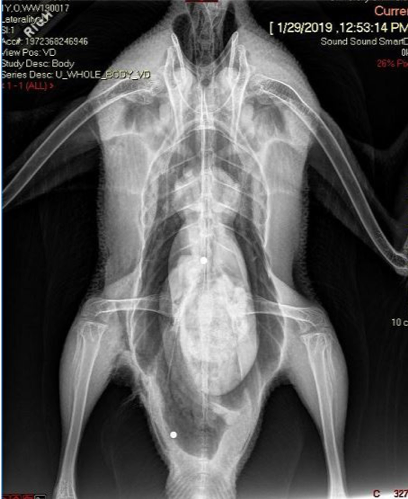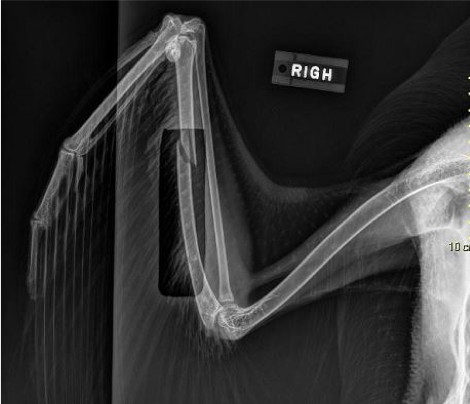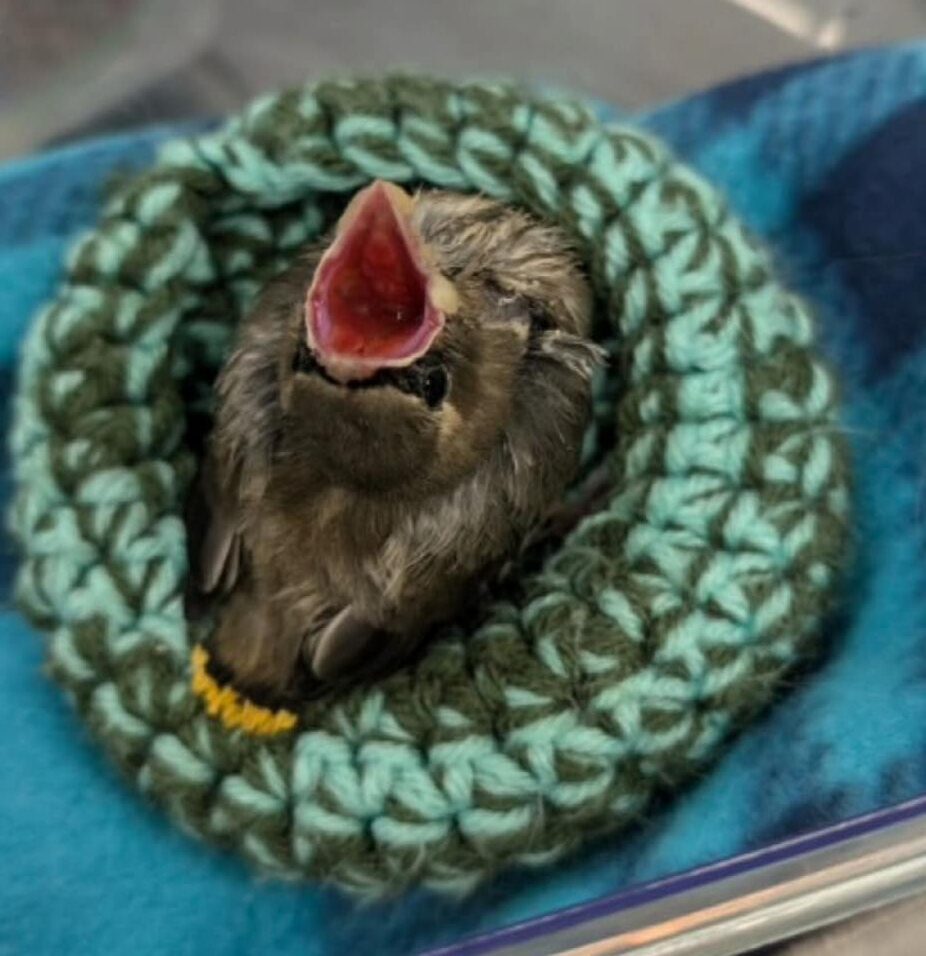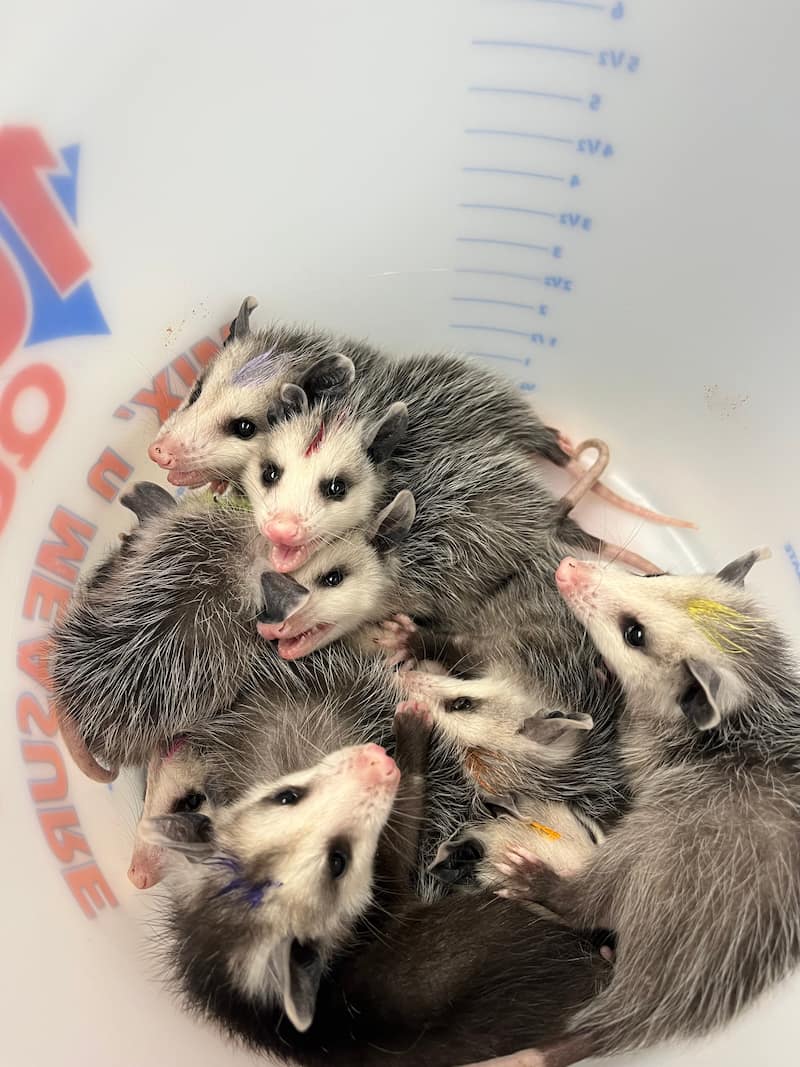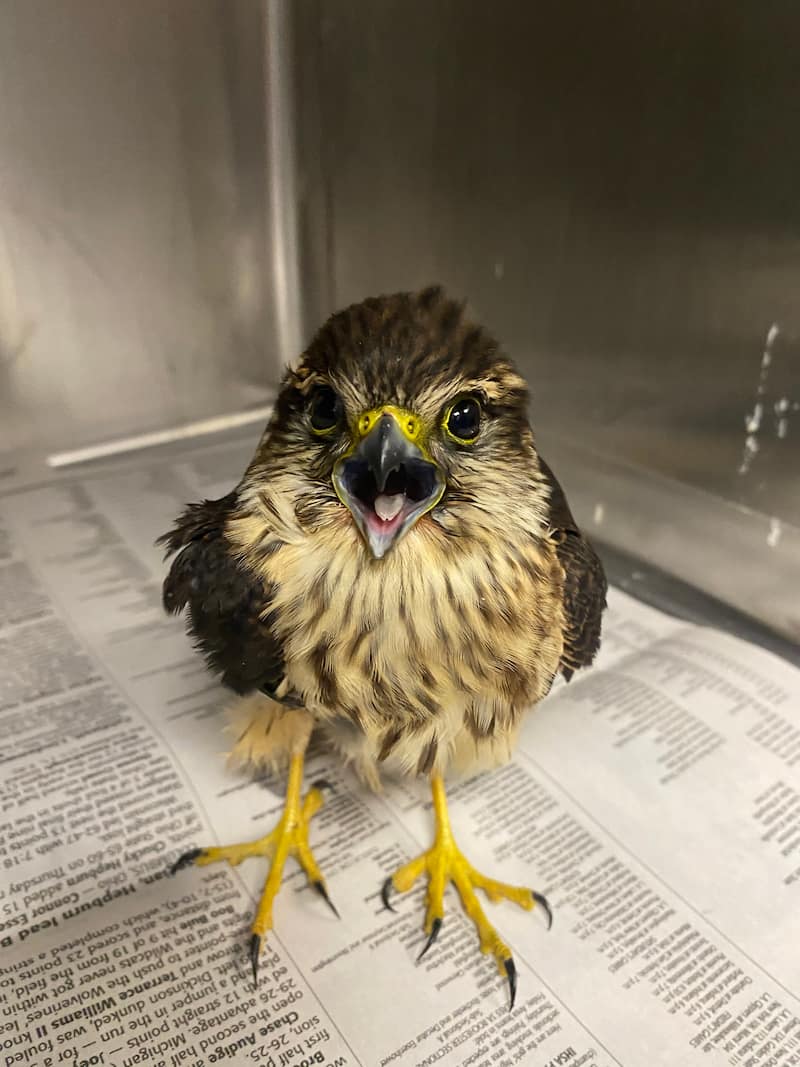Recently, a Canada goose presented to the Wildlife Medical Clinic after potentially being shot (illegally if outside of waterfowl hunting season). Sure enough, a small wound was found under the right leg and one mall metal pellet was palpated. This pellet was removed, and otherwise, the goose appeared bright and active (and of course, hissing). The goose was given an injectable, long-acting pain medication as well as an oral antibiotic. We wanted to start with a broad-spectrum antibiotic to cover any possibilities considering we didn’t know what could be in the wound. The final drug started was an oral non-steroidal anti-inflammatory drug.
The next day the goose was placed under general anesthesia for radiographs (X-rays) to check for internal damage from the gunshot – often there is more than one pellets involved. Low and behold, two other pellets were found! The goose also suffered a wing and pelvic fracture (see pictures below), either from being shot or from falling while flying. To stabilize the wing, a bandage called a figure-8 wrap was placed. Luckily, the fracture was just of the ulna and not the radius as well, so no surgery was needed. The pelvis was still aligned appropriately and the goose was walking normally, so no further intervention was needed.
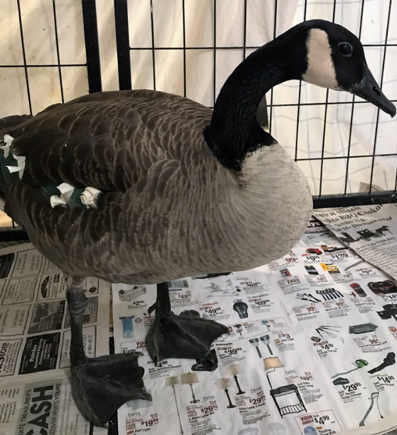
Unfortunately, this was not the goose’s only problem. The gunshot wound found on the initial exam re-opened and some blood-tinged fluid was found. On further examination (under anesthesia), it was found that the gunshot injury tracked about 10 cm (nearly 4 inches) towards this goose’s head, traveling underneath the keel (sternum). This large pocket was cleaned and packed with honey and bandaging material. Honey is an amazing, natural topical therapy for potentially infected wounds. Not only does the high sugar content limit the ability of microbes to grow, but honey also produces hydrogen peroxide, a potent antibacterial agent, when broken down.
Bloodwork also revealed that the goose was indeed fighting off an infection. Despite this finding and the concerning appearance of the wound, a culture revealed that the antibiotic originally chosen was appropriate; it just needed more time to work.
Weeks of medical care and bandaging paid off! By three weeks, the wound was almost completely healed and it was time to recheck the ulnar and pelvic fractures. Both appeared to be healing well so the bandage around the wing was removed (see recheck X-ray below).
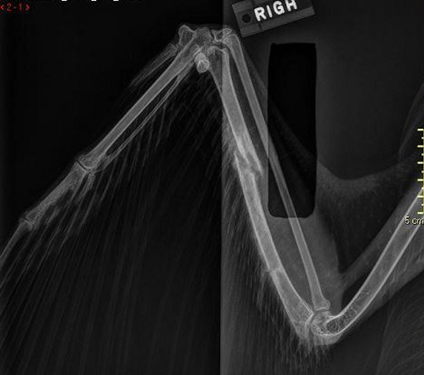
Because the wing was bandaged for an extended period of time, the wrist and elbow joints had become quite stiff. Physical therapy, including range of motion exercises and laser therapy, were used to help the goose regain appropriate function. Once we were confident that the wing was strong enough, the goose was released to a local pond with other geese. After weeks of care, it was more than ready to return to the wild!
Written by Sarah Reeves, second-year veterinary student.

